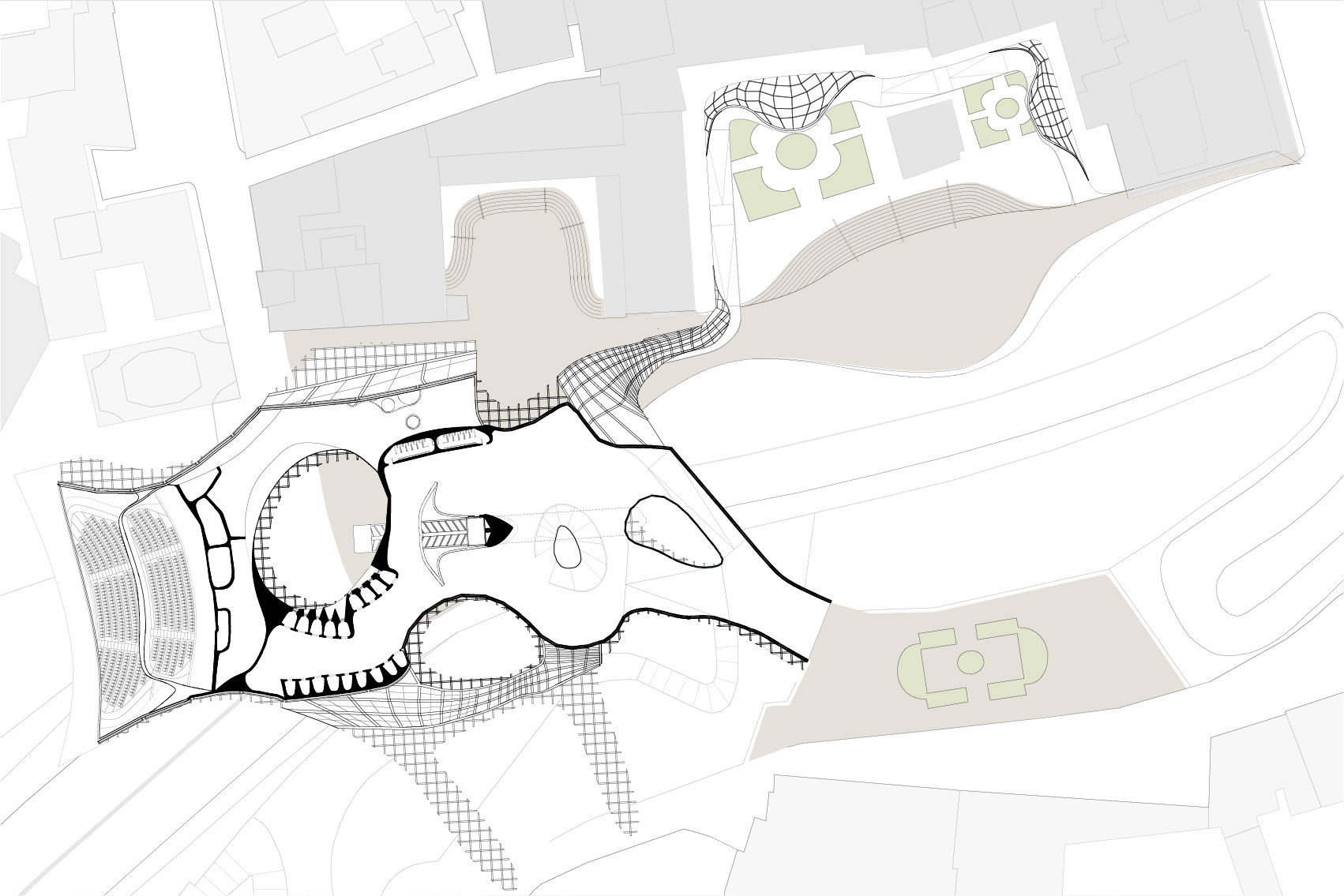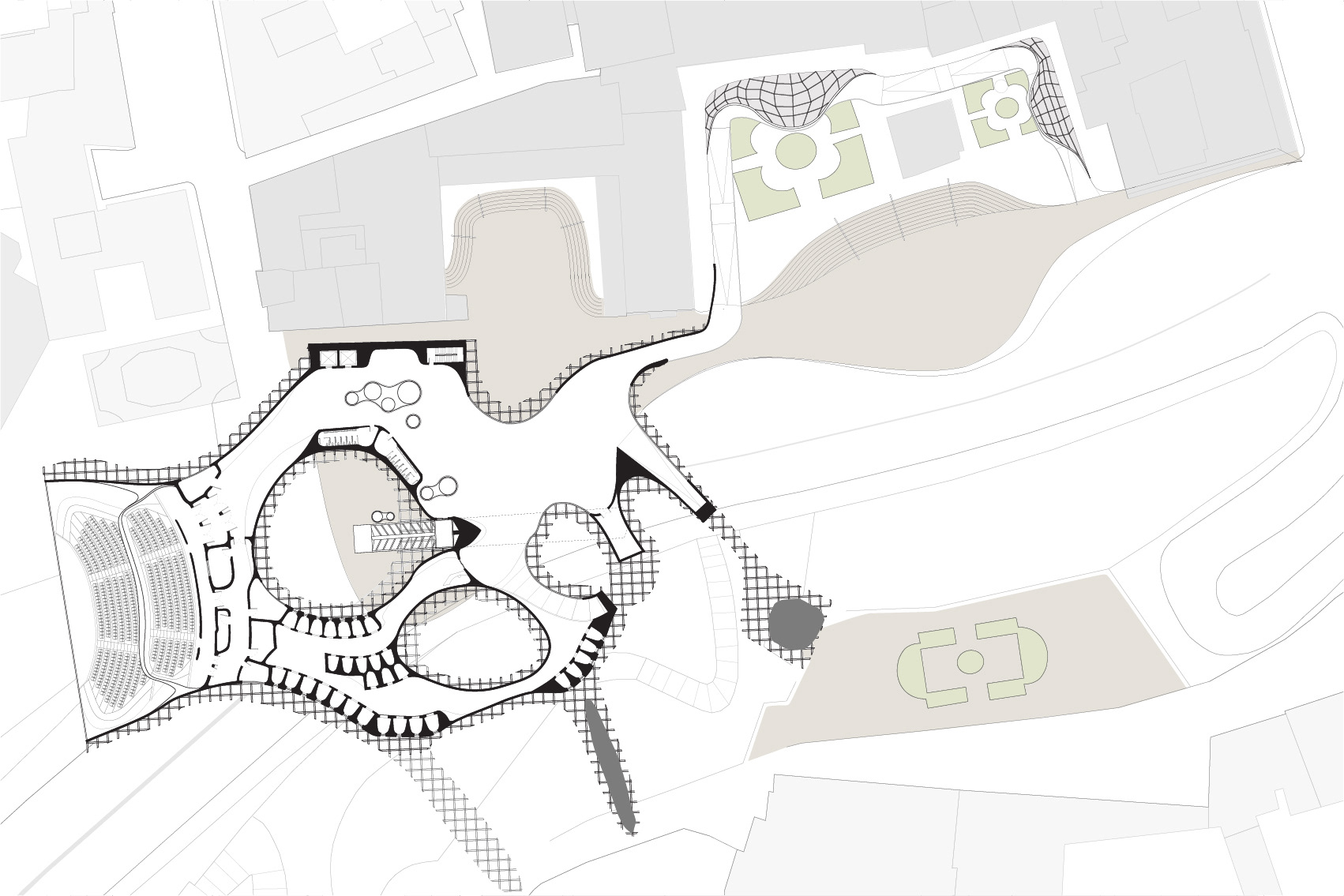The Visitor's Center of Rome is the creation of an eight hill of Rome, one that would combine the modernized world of the tourist in the ancient scheme of the city, highlighting the ruins of the city in a new way.
Part I: Public is dead (or privatized)
The Romans were particularly inventive in the creation of space and influenced the questioning of what it meant to inhabit space. For them, many buildings had to play with the idea of designing interiors as a continuation of the exterior. For many centuries, Rome was mostly known for its public spaces where gathering took place in piazzas, courtyards and others; sadly, with the transition of time, most public spaces have become completely or partially privatized altering within the city context the general sense of public space. Urban development must then address the topic of “re-gaining” public spaces to design a more social and civil environment in modern cities and bring back the sense of open interiors to enrich the urban fabric of Rome. We believe that the creation of public spaces would bring beneficial effects including a user reform to organize and amend the relationship between the locals and the tourists.
Part II: Program is dead (or fluctuates)
The Romans took advantage of the terrain by using it as a sort of designator for various programs of the city that served as the rules upon the design was created. The low land became home for the places of gathering (like the Forum, Colisseum, Baths) and the higher topography was for homes for the residents (the further their place on the hill was the higher their rank in the republic because they had the most visual access of the city and its happenings). With the influence of religion and tourism, many of Rome’s buildings have altered their programs to adapt to current conditions. The intention for which a building was created can become overruled by the people in charge to utilize the space for a different purpose (e.g. palace as museum). In addition, there are also cases where the program of a building fluctuates not because it became imposed, but because of a cultural phenomenon where the users start to treat the space in a different manner and the way in which the building is inhabited and the activities performed within them determine their function (e.g. churches as museums). We strongly agree that the design of contemporary spaces should anticipate the fluid changes in program that cultural scenarios impose on architecture so that the urban context of Rome can continue to nurture while conserving its history and value.
Part III: Observation is dead (or replaced)
The use of perspective drawings played a major role in the urban development or Rome. Graphical representations of spatial conditions determined the way the Romans perceived specifically a place within the city. For them, the way a building was approached, discovered and inhabited was directly linked to a persons point of view and the circulation through such space. Nowadays, it seems that the roles have changed as the user becomes the most important object within a space. Photographs have replaced observation as the documentation of tourism distort the hierarchy between performance and record. We propose that the use of technology serve as a medium to replace the role of documentation for the user so that observation can become appreciated while devices take the pictures for the tourist from strategic high points. By doing so, the circulation flow throughout highly congested touristic locations would become more congested touristic locations would become more dynamic as the performance of the users would be altered.
Part IV: Fountains are dead (or lost)
Since the Roman times, communication has influenced the outcome of many key historical moments. The use of messengers was vital in any warfare situation were the emperors or kings of each territory needed to prepare for combat. In addition, written communication also allowed for the economic growth of cities where bilateral treaties were created. Nowadays, the global communication possibilities generated by cutting edge technology allow for every single user to access information or communicate with another users in an instant manner. The use of Internet has become vital for the current generation as we have become dependent to general applications that shape our day to day lives. It is necessary that modern cities that are visited by great amounts of tourists expand on technological barriers so that every user can stay in communication while at public spaces abroad. We believe that the implementation of Wi-Fi centers in public spaces would replace the concept of the fountain where the new gathering spaces will become those where the access to the internet is free and promotes social change.
Critics: Dagmar Richter



